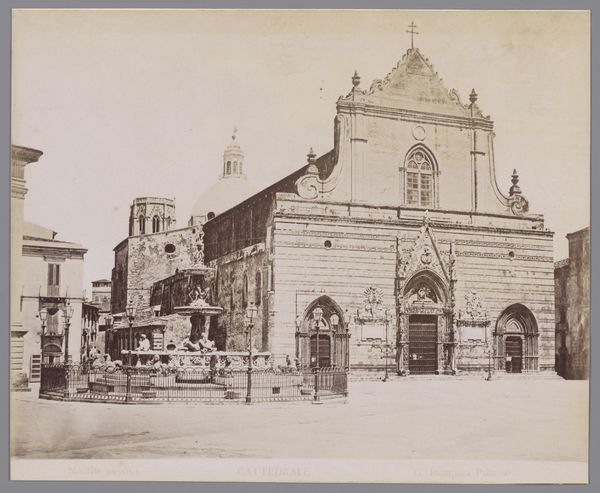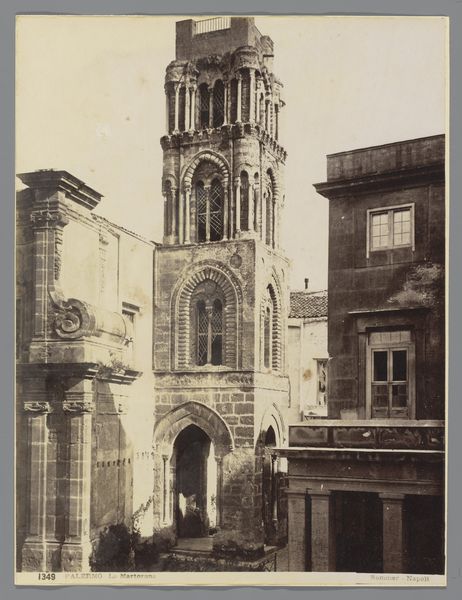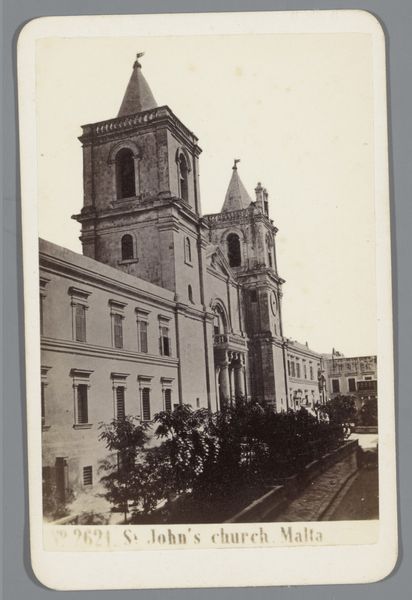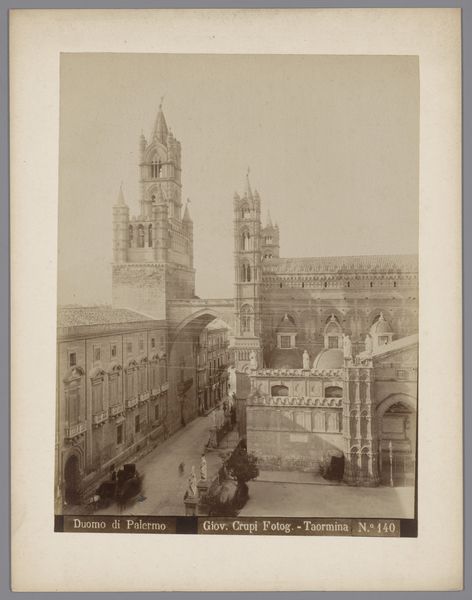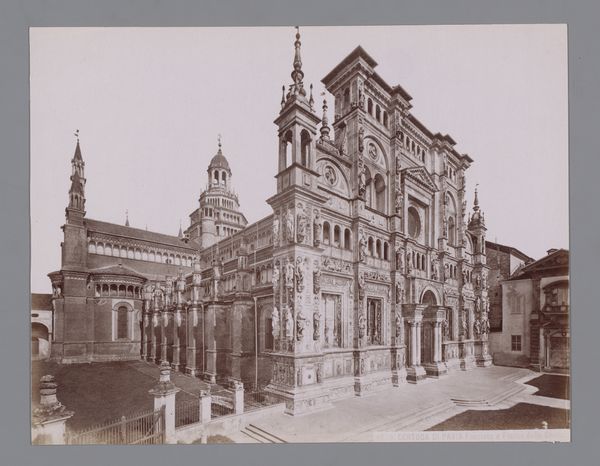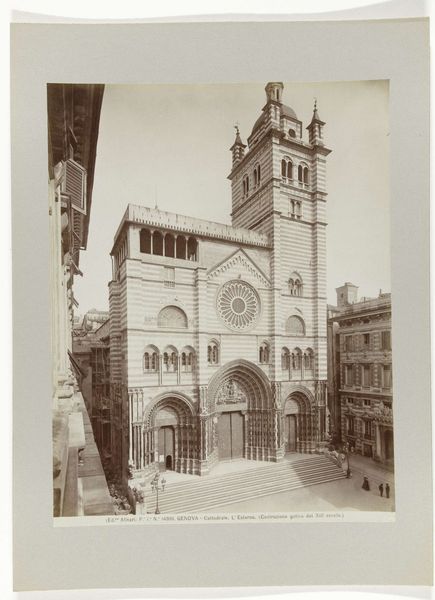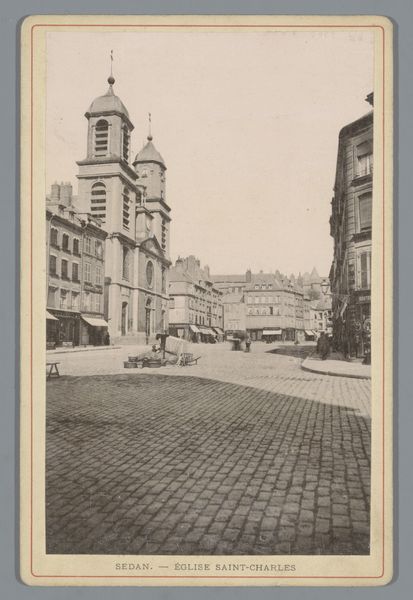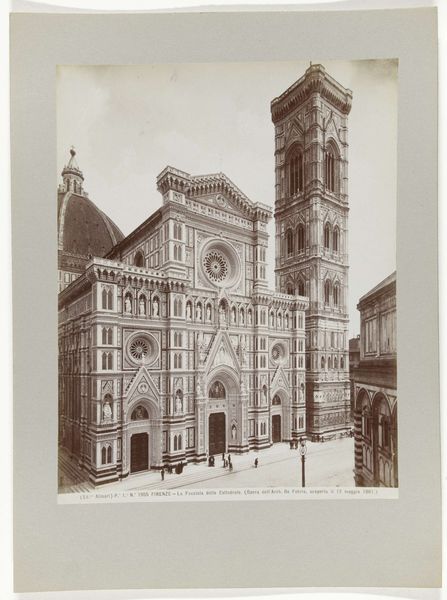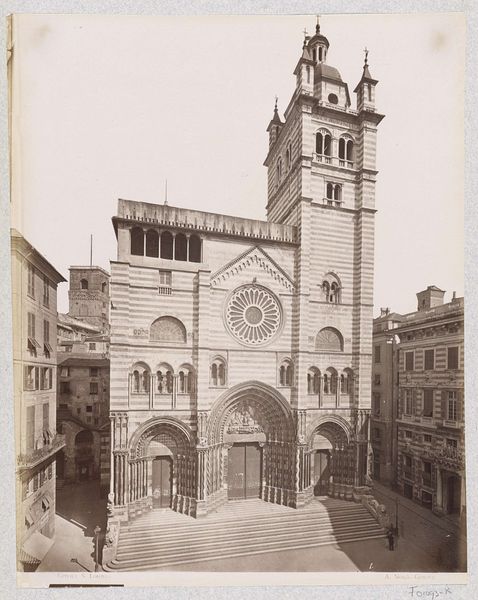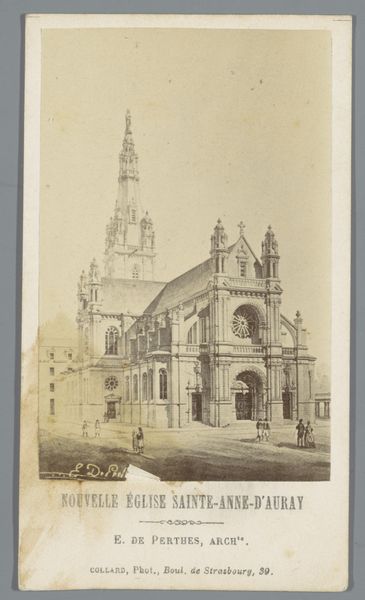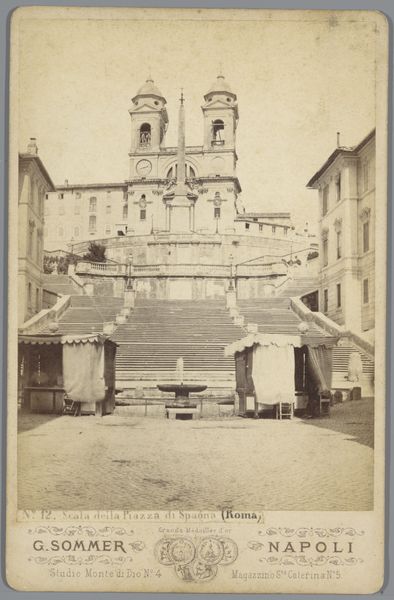
print, photography, gelatin-silver-print
# print
#
photography
#
gelatin-silver-print
#
cityscape
#
italian-renaissance
Dimensions: height 259 mm, width 202 mm
Copyright: Rijks Museum: Open Domain
Editor: Here we have an undated print, sometime between 1865 and 1900, titled "Klokkentoren van de kathedraal van Ferrara," attributed to Fotografia dell'Emilia. It’s a gelatin silver print and, wow, the sheer scale of the bell tower against the market stalls creates such a striking contrast. How do you interpret this image, considering its historical context? Curator: The tension between the timeless architecture of the bell tower, a symbol of civic and religious power, and the bustling temporary market at its base is precisely where the photograph finds its power. Consider the role photography played in the late 19th century. It was used both to document urban development and to shape perceptions of cities like Ferrara. Editor: That makes sense. It's like a record of a moment, but also an advertisement of sorts for the city, perhaps? Curator: Exactly. Notice the figures in the foreground; their presence anchors the photograph in everyday life, making the grandeur of the tower more accessible. But who was the intended audience for this photograph? Was it aimed at locals to instill civic pride, or tourists to promote Ferrara as a cultural destination? Or both? Editor: So, it's not just a picture of a pretty building, it’s also a reflection of social dynamics and intended purpose. What is striking to me is the contrast in permanence, what has stood and what is fleeting. Curator: Yes, and by framing this specific contrast, the photographer makes an argument about Ferrara's place in time and perhaps, the enduring power of institutions versus the transience of daily life. What else did you notice? Editor: I guess the presence of so many figures, who were standing around when the image was taken, humanizes what otherwise might have felt sterile. It definitely lends to its "slice of life" feeling. Curator: Absolutely. Photography’s claim to objectivity often obscured its inherent biases. By considering these nuances, we move beyond merely admiring the visual spectacle to understanding its complex social and political implications. Editor: I never thought about a simple photograph having so many layers. Thanks for your help! Curator: My pleasure! It's all about looking critically, considering who made the image and why. Every photograph tells a story.
Comments
No comments
Be the first to comment and join the conversation on the ultimate creative platform.
